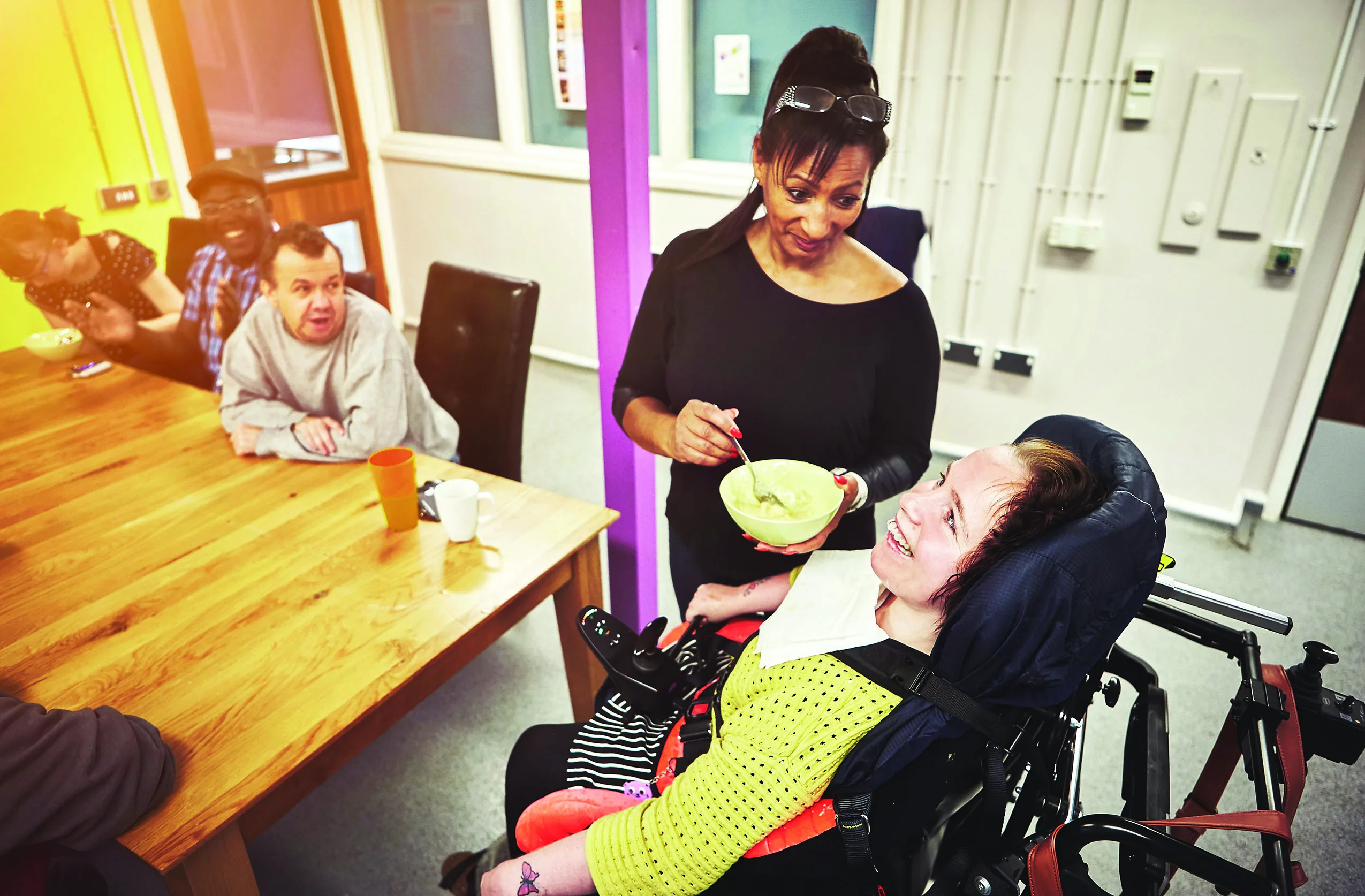
Finding respite care for young and older individuals with special needs can be tricky. Young individuals with special needs, as well as those growing older, may need respite care at some point in their lives to offer caregivers breathing room to re-center themselves to best care for their loved ones. Due to a number of factors, it’s becoming more difficult to find the proper care for this population.
Lack of Awareness and Information
Some families and caregivers may not be aware of the existence or availability of respite care facilities. Information about these services may not be easily accessible or adequately communicated, resulting in a lack of utilization.
Jesse Jean is the Cuyahoga County Divisions Director for Consumer Support Services, which contracts with the Cuyahoga County Board of Developmental Disabilities as a respite provider, staffing the location with four respite beds.
Jean says a big factor in why it’s difficult for families to find respite care for their younger and older family members is due to not knowing where or how to begin the process.
“For many, the whole process can be overwhelming,” Jean says. “I always encourage families who reach out to us to begin with their local county board of developmental disabilities. There are service coordinators available to assist them throughout the process. Due to demand, this may not happen right away, but continued perseverance and patience is the best course of action.”
Craig Thomas, senior director of clinical services at the Western Reserve Area Agency on Aging, supports the organization’s home and community-based waiver service programs. Thomas says WRAAA often comes across a need for respite services, both outside and inside the home. He agrees with Jean that one of the first difficulties for families is having the initial conversations around respite care, as they often are met with resistance and fear.
“It is important first to have the necessary conversations on what respite can do in the long run to help people remain safely in their homes, and then to move to a planning phase,” Thomas says. “Not knowing the available resources, locations or specialties can be a difficulty in making respite decisions.”Limited Availability
and Funding
There often is a limited number of respite care facilities available, especially those specifically designed to cater to individuals with special needs. The demand for such services can be high, while the supply is relatively low. Also, respite care facilities require funding to operate and provide necessary services, but financial resources allocated to respite care programs may be insufficient or inadequate.
This makes it challenging to establish and maintain these facilities. Limited funding can restrict the number of available spaces and the quality of care provided. This can result in long waiting lists and difficulty securing a spot.
Respite care facilities also are too often concentrated in specific regions or urban areas, making it difficult for individuals in rural or remote locations to access these services.
Jean says county service coordinators can help families seeking funding, location information and availability for family members in need of respite care.
Specialized Care Requirements
Individuals with special needs may have unique and complex care requirements. It can be challenging to find respite care facilities that have staff trained to handle specific conditions or disabilities. Many facilities may not have the necessary resources, expertise, or staff-to-patient ratios to provide appropriate care for individuals with diverse needs.
Jean says it’s important to ask about staffing, daily schedule, activities, capacity, environmental concerns, and projected duration of the respite staff.
Thomas says discussing all needs is crucial. He mentions options such as adult day care services that can be a “daily” respite option.
“Make sure to ask about those things most important to your loved ones — be it food/menu items, activities, visitation guidelines, room privacy, technology/television/games, etc. — all those things that you know they would want to have for a successful respite stay,” Thomas says.
Thomas agrees with Jean that asking about the actual medical and behavioral health supports needed is critical to the health and well-being of the individuals needing care.
Addressing these challenges from a higher level requires increased funding and support for respite care programs, enhanced training for caregivers and facility staff, improved accessibility in rural areas, and awareness campaigns to educate families about the benefits and availability of respite care services.
Jean adds it’s increasingly important for community organizations to break down communication barriers.
“Establishing rapport with the surrounding community is big,” Jean says. “Communication is vital to helping the community become inclusive for our population.”
Thomas says partnerships across programs and agencies is crucial, as each program may have some difference and unique implementations.
“Our screening and assessment process always includes the prospect of making referrals to other community and partner organizations to make sure the needs of the individual are met,” Thomas says. “Our state has multiple waiver programs and oversight entities (Medicaid, Aging, DODD, Managed Care Plans), so it really is incumbent on us to always be providing updated accurate information that can span the programs.”
Respite Care Research &
Alternatives Checklist
To ensure you’re exhausting all options when it comes to respite care for your loved ones, we’ve created a checklist of resources to help you find the best fit for your family.
Also, here are a few important definitions to have handy when doing your research.
0 Respite Care: Temporary care in a facility or at-home of a sick, elderly, or person with disabilities, providing relief for their usual caregiver.
0 Assisted Living: For individuals old enough and willing to live on their own with some assistance with instrumental activities of daily living.
0 In-Home Care: Individual lives at home and a small team is organized to help with daily activities assigned on an intermittent basis.
0 Board and Care Homes: Helping individuals with mild to moderate memory challenges.
0 Adult Day Care: Facilities for adults that receive around-the-clock assistance from the staff.
6 Things to Consider
When Starting the Respite Care Journey
1. Have the Conversation Early.
Life emergencies happen at any time. Start reaching out to resources and contacts so you can have locations identified when needed. This is also a good time to decide what kind of respite care is required.
2. Exhaust County & State Resources. Reach out to offices such as your Consumer Support Services or Board of Developmental Disabilities to discuss your respite care needs. This can help you make the best decision and appropriate fit for your situation.
3.
Do Your Research. Use online resources to identify facilities near you or organizations offering in-home care. Ensure you review the available amenities and if they will properly accommodate your loved one.
4.
Ask about Staffing, Activities, Capacity, and Environmental Concerns. You want your loved ones to be comfortable wherever their care is provided. Make sure you have your loved one’s needs and daily routine in schedule when making your decision.
5.
Get Answers on Medical/Behavioral Health Support. Find out if therapy options are available concurrent to the respite stay, ask about visitation options, and consider other factors that are critical to the mental health of your loved one.
6.
Discuss Payment Options. State and federal funding, as well as private sources, may be available to you to pay for respite care. Generally, every state offers some respite assistance through Medicaid waivers. Medicare does not cover adult day care services, but Medicaid can foot the bills from a licensed center. There are also faith-based organizations that offer respite care services.

